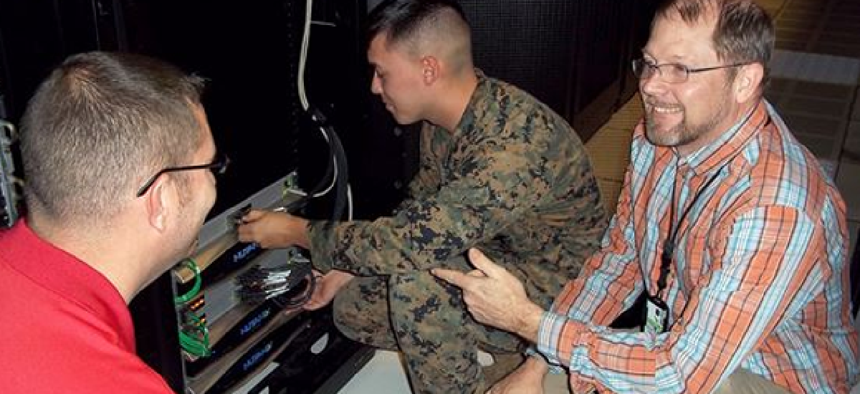Marines cut servers, improve service with hyperconverged infrastructure


Connecting state and local government leaders
To save money, energy and space, the Marine Corps Systems Command installed a hyperconverged infrastructure to virtualize its Organizational Messaging Service.
To save money, energy and space, the Marine Corps Systems Command installed hyperconverged infrastructure systems to virtualize servers for its Organizational Messaging Service at Camp Lejeune, N.C., and Camp Pendleton, Calif.
OMS is used by Marine Corps commands to communicate administrative and operational messages between and within organizations. Prior to implementing the new system, OMS was run on 12 physical servers, two storage switches and a storage-area network device. Camp Lejeune and Camp Pendleton each had two of these systems -- one for classified and another for unclassified information, according to the Marine Corps. A single system took up over six feet of rack space and required technical support from three separate vendors.
The hyperconverged infrastructure unit combines storage, networking and compute functions into a single 10-inch block, reducing the system’s footprint by 85 percent. The compact system also resulted in an 81 percent decrease in the power consumption and a 74 percent decrease in air conditioning.
The deployment combines capabilities from Nutanix, Telos Corporation and Arista Networks. "The team worked cooperatively to scope and deliver a system that would best meet the requirements for the Marine Corps for scalability, reliability, simplicity and interoperability," said Nutanix Vice President Federal Chris Howard. "It also enabled the data center to remain modern and maintain a strong security posture.”
The system uses a web interface, so it’s easier to maintain, said Jason Hessler, a support engineer who works with OMS. “The entire system can be installed in a data center in a matter of hours, and once the initial server is built, additional virtual servers can be duplicated in seconds.”
It can be used for both unclassified and classified networks, according to Support Engineer Andy Collison. The system automatically implements Defense Information Systems Agency security requirements and self-remediates when security breakdowns occur.
It also improves performance for users. The system identifies and prioritizes the most-used data, making it more easily accessible at exponentially higher processing speeds than before.
The new system “creates an environment where we can dynamically provide capacity when and where it is needed across the enterprise,” said Lt. Col. Dale Webster from the Command, Control, Communications and Computers directorate at Headquarters Marine Corps.
Moving forward, the Corps said it is continually looking for new infrastructure that makes data center consolidation easier and more affordable.
Editor's note: This story was changed March 3 to add a statement from Nutanix.
NEXT STORY: Stop Asking Whether Uber Is Transit's Enemy




